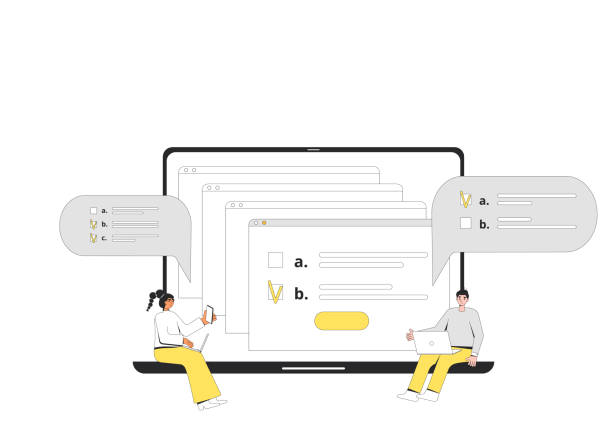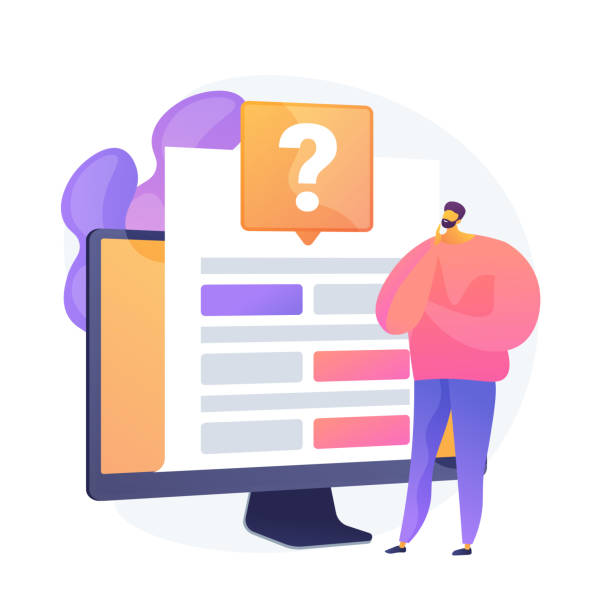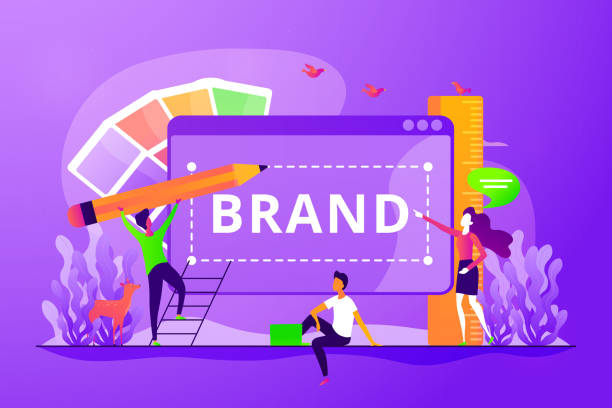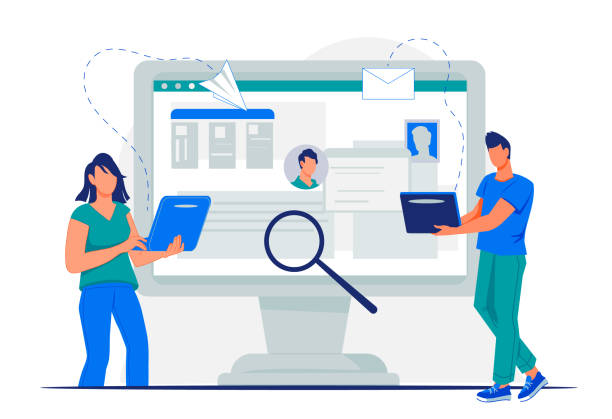Introduction to Personal Website Design and Its Importance
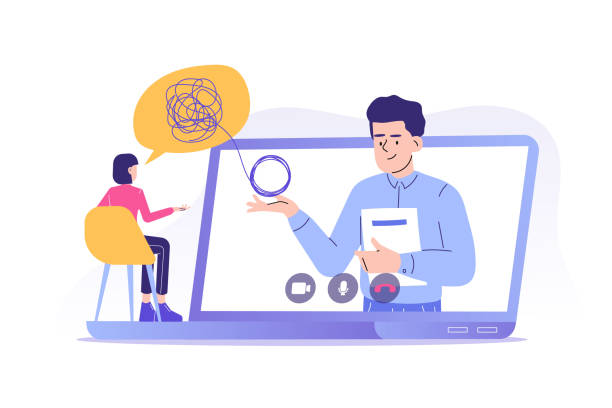
Personal website design is no longer just a luxury choice, but an undeniable necessity in today’s digital world.
This process not only helps you to have a powerful online presence, but also provides a platform where you can best accomplish your personal branding.
In this section, we will #explain and #guide you through the various dimensions of this topic and examine its importance from different angles.
A personal website is a dynamic and accessible resume for everyone that can showcase your skills, experiences, and interests.
This space allows you to have complete control over how you present yourself, unlike social media platforms that usually have limitations in design and content presentation.
From a freelance professional to an artist, writer, or even a job-seeking student, anyone can benefit from having a dedicated platform.
This website can be a work portfolio, a personal blog, or even a small shop for your handmade products.
By creating a personal website, you create a unique space where visitors can get to know you, your work, and your perspectives.
This builds trust and demonstrates your seriousness and professionalism in your field of activity.
Furthermore, a personal website helps you to be seen in search engines and gain new opportunities for growth and collaboration.
This platform will be a bridge between you and your audience, future employers, or potential collaborators, and ultimately help you advance in your career or personal path and share your unique perspectives with the world.
How much does losing business leads due to an unprofessional website cost you? Solve this problem forever with professional corporate website design by Rasavab!
✅ Increased credibility and trust of potential customers
✅ Easier attraction of new business leads
⚡ Get a free consultation now!
Initial Steps Before Starting Personal Website Design
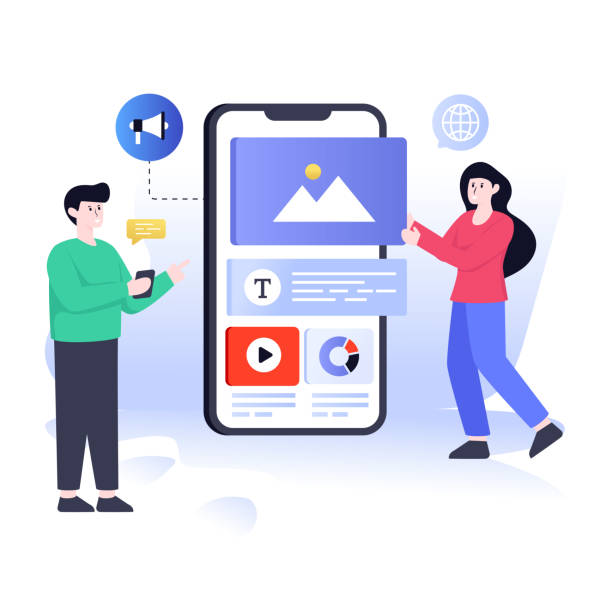
Before entering the practical phase of personal website design, it is essential to take the initial and fundamental steps in a precise and planned manner.
These steps act as a roadmap and help you follow a clear and purposeful path.
In this section, we will #educate and #specialize in examining these important steps.
The first step is to define your website’s goal and audience.
Ask yourself: Why do you want a personal website? Is it for portfolio display, knowledge sharing, or even selling products? A precise understanding of the goal helps you choose the appropriate structure and content for your website.
Also, you need to identify your target audience.
Who will visit your website? Industry professionals, potential customers, or enthusiasts in a specific field? By knowing your audience, you can correctly adjust the tone, style, and topics of your content.
The next step is choosing a domain name and hosting.
The domain name is your website’s address and should be memorable, relevant to you or your activity, and available.
Hosting is the space where your website files are stored, and it should be chosen from a reputable provider with strong support.
The quality of hosting directly affects your website’s speed and stability.
Finally, planning for the content structure of the website is very important.
Identify the main pages (Home, About Me, Contact Us, Portfolio/Services, Blog) and note down general ideas for the content of each section.
These preparations help you to start creating your personal site with a broader and more efficient perspective.
Choosing the Right Platform for Personal Website Design
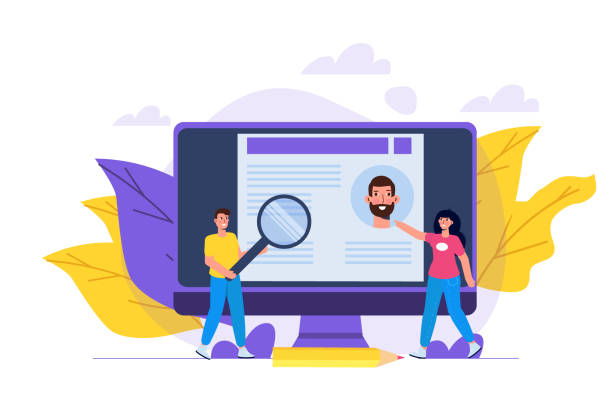
One of the most important decisions in the process of personal website design is choosing the platform upon which your website will be built.
This choice will directly impact the ease of construction, flexibility, and future costs of your website.
In this section, we will #analyze and #guide you through the available options and provide a comparative table.
The main options for building a personal website include Content Management Systems (CMS) like WordPress, website builder platforms like Wix and Squarespace, as well as custom coding.
| Platform | Advantages | Disadvantages | Suitable for |
|---|---|---|---|
| WordPress | High flexibility, numerous plugins, large community, SEO-friendly | Requires basic technical knowledge, regular maintenance, complexity for beginners | Bloggers, small businesses, freelancers, anyone who needs full control |
| Wix | Easy to use, drag-and-drop functionality, beautiful templates, built-in hosting | Limited flexibility, average SEO, difficult site transfer, tiered pricing | Individuals without technical knowledge, simple portfolios, small businesses with basic needs |
| Squarespace | Stylish and professional design, good support, secure hosting, e-commerce tools | Higher price, more limited customization than WordPress, requires monthly payment | Artists, photographers, designers, small businesses with a focus on aesthetics |
| Custom Coding | Unlimited flexibility, optimal performance, high security | High cost and time, requires specialized programming knowledge, complex maintenance | Very complex projects, large corporate websites, innovative startups |
Choosing a platform depends on your technical skill level, budget, and the degree of flexibility you require.
For most individuals looking to design a personal website, WordPress is a very popular option that offers a balance between ease of use and functional power.
Visual Design and User Experience in a Personal Website

After choosing the platform, it’s time for the artistic and functional part of personal website design: visual design and user experience (UI/UX).
These aspects, presented in a #specialized and #educational manner, determine how your visitors will feel about your website and how easily they can interact with it.
A beautiful and user-friendly website can make a big difference in attracting and retaining an audience.
In the visual design section, factors such as layout, color scheme, and typography play essential roles.
The layout should be simple, organized, and understandable so that users can easily access the information they need.
Using sufficient white space increases readability and prevents visual clutter.
The color palette should match your personal brand and convey your desired mood.
Colors can evoke different emotions, so their intelligent selection is important.
Typography is also a crucial factor; fonts should be legible and of an appropriate size.
Furthermore, the harmony of fonts with each other and with the overall style of the website contributes to visual appeal.
Alongside visual design, user experience (UX) is also crucial.
UX refers to the ease of use, accessibility, and enjoyable interaction of the user with the website.
Your website should be responsive, meaning it displays correctly on various devices (mobile, tablet, desktop).
Page loading speed is also very important; slow websites can deter users.
Navigation should be clear and intuitive so that users can easily move around your website and find the information they need.
Using clear menus, logical internal links, and prominent calls-to-action (CTAs) helps improve the user experience.
Finally, attention to small details such as subtle animations, user-friendly contact forms, and high-quality images can differentiate your online portfolio from others and create an unforgettable experience for visitors.
This integrated approach in your personal website design lays the foundation for a successful online presence.
Research shows that 80% of customers trust companies with professional websites more. Does your current website inspire this trust?
With Rasaweb’s corporate website design services, permanently solve the problem of customer distrust and a weak online image!
✅ Create a professional image and increase customer trust
✅ Attract more sales leads and grow your business
⚡ Get a free consultation
Creating Engaging and Purposeful Content for a Personal Website
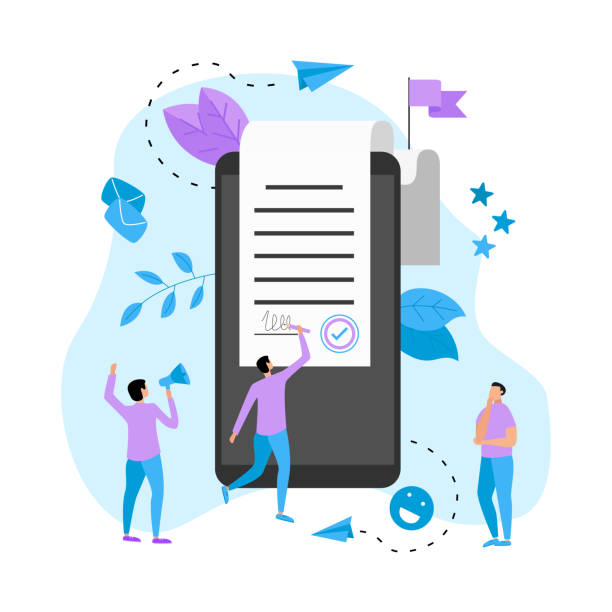
Once the infrastructure and visual design of your personal website design are in place, it’s time for its beating heart: content creation.
Content is the main reason users visit your website, and it should be both engaging and purposeful.
In this section, we will discuss strategies for creating excellent content in an #entertaining way and by posing #thought-provoking questions.
The content of your personal website can take various forms: blog articles, case studies, project portfolios, image galleries, videos, or even podcasts.
The important thing is to choose content that best reflects your expertise, skills, and personality.
For example, if you are a graphic designer, a visual portfolio with detailed explanations of each project is very important.
If you are a writer, a personal blog where you share your perspectives is essential.
The main question is: What makes you unique and how can you showcase this through your content? Storytelling plays a key role in making content engaging.
Instead of simply listing skills, tell stories about your experiences, the challenges you’ve overcome, and the lessons you’ve learned.
This approach establishes a deeper connection with the audience.
Furthermore, your content should provide added value.
Are you providing new information? Are you solving a problem? Are you inspiring? Low-quality and copied content not only damages your credibility but can also negatively impact your search engine rankings.
Regularly update your content and add new material to keep your website dynamic and fresh.
Ultimately, remember that the goal of creating a personal site with rich content is not only to showcase your capabilities but also to establish a genuine connection with your audience.
Search Engine Optimization (SEO) for a Personal Website
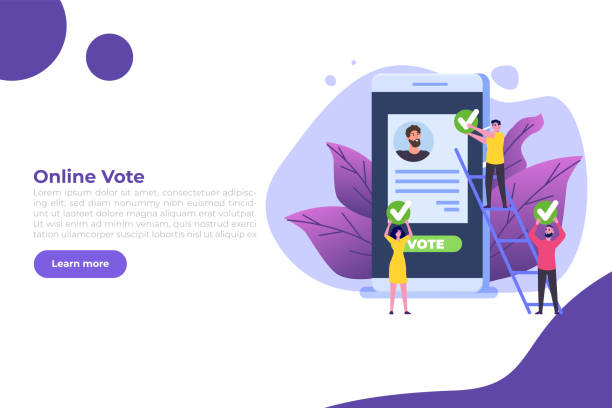
Simply having a beautiful and content-rich personal website design is not enough; to be seen in the vast ocean of the internet, you must apply the principles of Search Engine Optimization (SEO).
SEO, presented in a #specialized and #guiding manner, helps your website appear higher in Google and other search engine results, attracting more organic traffic.
The first step in SEO is keyword research.
You need to understand what phrases your target audience searches for to find information related to your field of activity.
Use keyword research tools like Google Keyword Planner or Ahrefs to identify high-volume and relevant keywords.
After identifying keywords, it’s time for On-Page SEO.
This involves optimizing the internal elements of your website.
Naturally place your keywords in page titles, headings (H1, H2, H3), body text, meta descriptions, and URL addresses.
Be sure to use high-quality and optimized images and write appropriate alt tags for them.
Your website’s structure should be logical and have proper internal links so that search engines can easily crawl your pages.
In addition to On-Page SEO, Technical SEO is also important.
Ensure that your website loads quickly (site speed is one of the important ranking factors), is mobile-friendly, and uses an SSL certificate for security (HTTPS).
The sitemap and robots.txt file should also be correctly configured so that search engines can effectively index your site.
Ultimately, your personal website design should be carried out with SEO principles in mind to achieve maximum visibility in the online space and have a successful personal website.
Personal Website Security and Maintenance
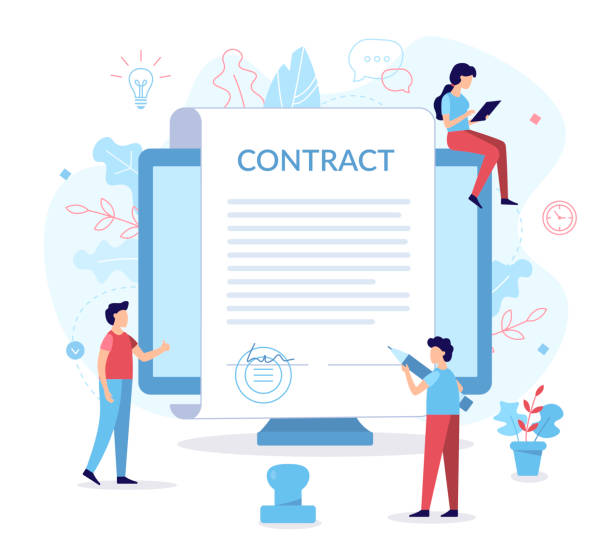
After launch and optimization, your personal website design reaches the stage of maintenance and security.
This section, presented in a #news and #explanatory manner, is vitally important because an insecure website can quickly destroy your credibility and endanger your personal information or that of your visitors.
Cybersecurity for personal websites is of high importance, especially if they have contact forms, comment sections, or any user interaction.
| Action | Description | Frequency |
|---|---|---|
| SSL Certificate | Ensure HTTPS is active for data encryption and to increase user trust and SEO. | Always (one-time setup) |
| Software Updates | Update CMS core, plugins, and themes to the latest version to fix vulnerabilities. | Regularly (weekly/monthly) |
| Backup | Regularly back up website files and database. | Regularly (daily/weekly) |
| Strong Passwords | Use complex passwords for the admin panel and hosting. | Always |
| Security Monitoring | Use security plugins or monitoring services to identify threats. | Continuously |
| Database Cleanup | Remove unnecessary data and optimize the database. | Monthly/Quarterly |
Regular maintenance means continuously updating your Content Management System (CMS) like WordPress, themes, and plugins.
Older versions of software often have known security vulnerabilities that hackers can exploit.
Furthermore, creating backups of your website is a vital action.
In case of any problem, data loss, or cyberattacks, having an up-to-date backup can restore your website in the shortest possible time.
Monitoring website traffic and performance is also part of maintenance.
Using tools like Google Analytics, you can analyze visitor behavior and identify potential issues.
By observing these points in your personal website management, you can create a secure and reliable online environment for yourself and your visitors.
Adding Advanced and Interactive Features to a Personal Website

For your personal website design to go beyond a simple online resume and become a dynamic and engaging platform, adding advanced and interactive features is essential.
This section, presented in a #specialized manner and posing #thought-provoking questions, discusses features that can enrich the user experience and strengthen your connection with your audience.
One such feature is contact and communication forms.
Can users easily contact you? A professional contact form not only provides a simple way to communicate but also prevents spam.
Adding interactive maps or a Frequently Asked Questions (FAQ) section can also help users find the information they need.
Integration with social media is also of high importance.
You can place direct links to your profiles on LinkedIn, Instagram, Twitter, or GitHub on your website.
You can even display your social media feeds directly on the website so that your content is automatically updated.
This allows visitors to follow you on different platforms and expand their interaction.
Using website analysis tools like Google Analytics is also crucial.
These tools provide you with precise information about the number of visitors, most visited pages, user dwell time, and how they entered your website.
This data can help you make more informed decisions to improve content and design.
Does your website need e-commerce capabilities? If you intend to sell digital or physical products, adding shopping features, a cart, and an online payment gateway is essential.
Even adding a review system or comment section for blog articles can increase user engagement and turn your personal platform into a small community.
By incorporating these features, your personal website design will transform into a more powerful tool for communication and influence.
Are you worried about losing customers because you don’t have a professional e-commerce site?
With e-commerce website design by Rasaweb, forget these worries!
✅ Significant increase in sales and visitor-to-customer conversion rate
✅ Professional and user-friendly design that gains customer trust
⚡ Get a free consultation from Rasaweb
Promoting and Marketing a Personal Website
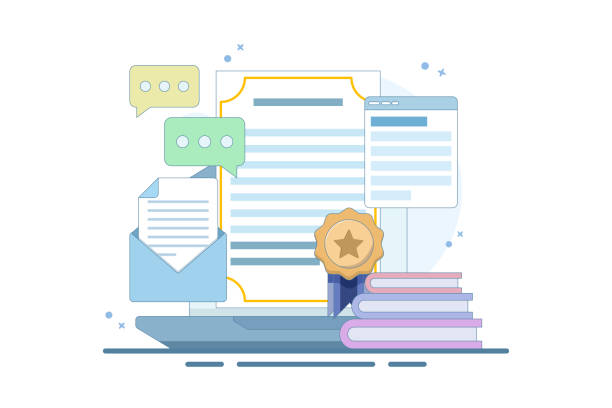
After completing your personal website design and uploading quality content, the next step is to introduce it to the world.
Marketing and promoting your personal website, presented in an #analytical and #guiding manner, helps you reach a wider audience and drive more targeted traffic to your site.
Even the best websites will not be seen without a proper marketing strategy.
One of the most effective methods is content marketing.
Share the valuable content you publish on your blog on other platforms such as social media, relevant Telegram groups, or even specialized forums.
This not only brings direct traffic to your website but can also help improve your SEO.
Social media marketing is also a powerful tool.
Update your profiles on platforms like LinkedIn, Instagram, X (formerly Twitter), or Facebook with direct links to your website.
Create regular and engaging posts that refer to your website’s content.
Interacting with followers and participating in relevant discussions can also help increase your visibility and credibility.
Email marketing is also a very effective method to maintain communication with visitors.
Place a newsletter sign-up form on your website and regularly send new content, updates, or special offers to subscribers.
Participating in events, webinars, or even podcasts provides excellent opportunities for networking and promoting your personal website.
Always carry your digital or physical business card containing your website address.
You can even contribute as a guest writer on other blogs and gain referral traffic with a link to your website.
By implementing a comprehensive marketing strategy, your personal website design can become a powerful tool for achieving your personal and professional goals.
Performance Analysis and Continuous Improvement of a Personal Website
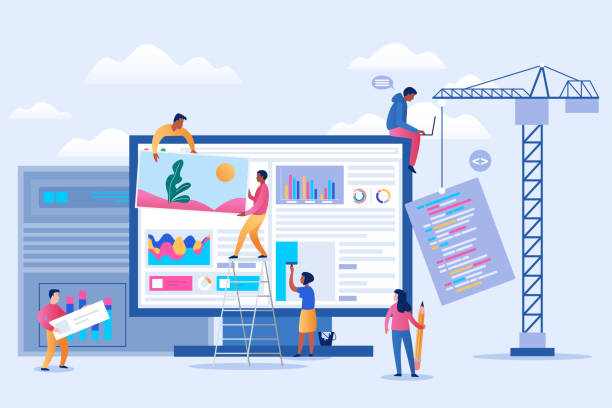
Building and promoting your personal website design is not the end of the work; in fact, it’s just the beginning of a continuous process: performance analysis and continuous improvement.
This section, presented in an #explanatory and #educational manner, helps you use data to enhance your website and consistently progress.
Google Analytics is a free and powerful tool that allows you to monitor website traffic, user behavior, traffic sources, and much more information.
By carefully examining this data, you can identify the strengths and weaknesses of your website.
For example, you can see which pages have the most views (an indicator of successful content), how long users stay on each page (an engagement metric), and which keywords they use to find you (for SEO improvement).
You can also examine the user journey on your website, and if many users leave the site at a specific point, you can review that section for user experience improvement.
Receiving feedback from users is also highly valuable.
You can place a simple feedback form or survey on your website or ask your audience through social media.
Even direct comments and suggestions via email or private messages can be a rich source of ideas for improvement.
A/B testing is a scientific method for comparing two versions of a webpage or website element to determine which performs better.
For example, you can test two versions of an article title or the color of a call-to-action button and see which one has a higher click-through rate.
Ultimately, personal website design is not a static process; rather, it’s a living entity that requires growth and evolution.
By committing to continuous analysis and implementing improvements based on data and feedback, you can ensure that your personal website always performs at its best and achieves your goals.
Frequently Asked Questions
| Question | Answer |
|---|---|
| 1. Why should we have a personal website? | To showcase skills, resume, portfolios, and create a professional personal brand. |
| 2. What is the first step for designing a personal website? | Defining the website’s main goal (e.g., displaying portfolio, online resume, personal blog) and the target audience. |
| 3. How important is choosing a suitable domain name? | Very important; the domain name should be relevant to your identity, memorable, and easy to type (e.g., your first and last name). |
| 4. What kind of content should be placed on a personal website? | Usually includes “About Me”, “Resume”, “Portfolio”, “Contact Information”, and optionally “Blog”. |
| 5. What does Responsive Design mean and why is it important? | It means the correct and optimal display of the website on all devices (mobile, tablet, laptop) and is vital for user experience and SEO. |
| 6. Which platforms are recommended for building a personal website? | WordPress for more flexibility and control, or using Website Builders like Wix or Squarespace for simplicity. |
| 7. How can personal website SEO be improved? | Using relevant keywords, meta descriptions, quality and up-to-date content, optimizing images, and loading speed. |
| 8. What are the main challenges in maintaining a personal website? | Regular content and plugin updates, regular data backups, and monitoring website security. |
| 9. Is programming knowledge required for personal website design? | No, using Content Management Systems (CMS) like WordPress or website builder tools, a personal website can be created without coding. |
| 10. How to promote and introduce your personal website? | Sharing links on social media, adding links in email signatures, business cards, resumes, and professional networking. |
And other services of Rasaweb Advertising Agency in the field of advertising
Smart Digital Branding: Designed for businesses seeking digital branding through intelligent data analysis.
Smart Data Analysis: A fast and efficient solution to increase sales with a focus on attractive user interface design.
Smart Sales Automation: Revolutionize online growth with the help of intelligent data analysis.
Smart SEO: A dedicated service for improving SEO rankings based on marketing automation.
Smart Sales Automation: Designed for businesses seeking to analyze customer behavior through SEO-driven content strategy.
And over a hundred other services in the field of internet advertising, advertising consulting, and organizational solutions.
Internet Advertising | Advertising Strategy | Advertorials
Sources
- Comprehensive Guide to Personal Website Design on Iranian Host Blog
- How to Design a Personal Website on Hamiweb
- Importance of Having a Personal Website from Digiato’s Perspective
- Starting Personal Website Design on Ponisha
? Are you ready to revolutionize your business in the digital world? Rasaweb Afarin Digital Marketing Agency, by providing comprehensive and innovative solutions, including fast website design and professional optimization, paves the way for your success. With us, have a powerful and lasting online presence.
📍 Tehran, Mirdamad Street, next to Bank Markazi, Kazeroon Janoubi Alley, Ramin Alley, Plaque 6

